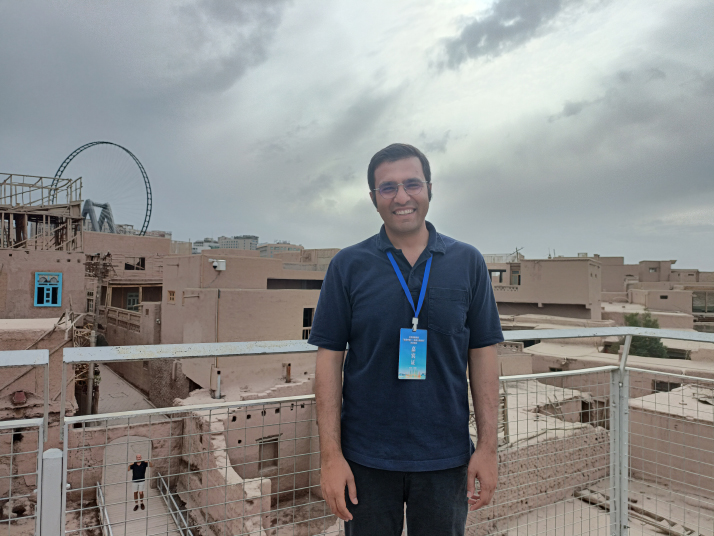| World |
| Silk Road Verses | |
|
|
 Ehsan Doostmohammadi visits Kashgar Ancient City, a residential compound and scenic spot in the city of Kashgar in Xinjiang Uygur Autonomous Region on August 19 (COURTESY PHOTO)
Xinjiang Uygur Autonomous Region has long been a crossroads of Eastern and Western civilizations, dating back to its role as a thriving hub along the ancient Silk Road. It not only carries a glorious past, but also brims with vitality in the modern age, continuing to write a story that spans both time and space. On January 21, 2016, during his visit to Iran, Chinese President Xi Jinping published a signed article in Iranian newspaper Iran titled Work Together for a Bright Future of China-Iran Relations. In the article, Xi made two references to Saadi, a towering figure in Persian literature. First, he recounted Saadi's extraordinary journey to the city of Kashgar, Xinjiang, in the 13th century. He then cleverly used Saadi's poetry to praise how these two ancient civilizations, separated by mountains and rivers, came together through the vast and enduring land and sea routes of the ancient Silk Road. This bond fostered mutual appreciation and deepened the friendship between the peoples of both countries. As the relationship between China and Iran strengthened through the Silk Road connection, different aspects of Chinese culture gradually integrated into the vast world of Iranian civilization. Iran, often known as the "land of poetry," quietly absorbed diverse elements of Chinese culture, particularly within the realm of Persian poetry. Many Persian poets, in their works, alluded to the distant and mysterious land of China, referred to as "Qin" in Persian. Qin is the name of China's first dynasty that ruled from 221 B.C. to 206 B.C. Though these poets sometimes referenced different ethnic groups within China, they consistently portrayed the entire region as "China." Saadi shared an indissoluble bond with China. His life was marked by a thirst for knowledge and a desire to explore the unknown. In his book The Rose Garden, Saadi vividly recalled a memorable encounter in this distant land. While traveling to Kashgar, he by chance met a charming young man and they struck up a pleasant conversation. When the young man inquired about Saadi's origins, Saadi smiled and kept his answer enigmatic. However, the next day, when Saadi was about to continue his journey, the young man learned his true identity through the caravan, hurried over to see him off, and sincerely expressed his regret, hoping that Saadi could stay for a few more days so that he could listen to his teachings. This story shows Saadi's unforgettable experience in Kashgar and reflects the cultural resonance between the Chinese and Iranian peoples that transcend time and space. As we all know, China has been famous for its abundant production of traditional Chinese medicine since ancient times. In the splendid chapters of Persian poetry, the musk from Hotan in southwestern Xinjiang is praised as a material endowed with a poetic soul. It is like a messenger, bringing unprecedented freshness and inspiration to Persian poetry and injecting new vitality and spiritual connotations into this ancient and brilliant literary tradition. Hafez, a 14th-century Persian poet, said in his Collected Poems: "The morning breeze blows the fresh breath to my side every day. The musk from Hotan, the spice of China, is no match for such an intoxicating fragrance." Every brick, every street and every cultural relic in Xinjiang seems to tell stories of the past, allowing me to reexamine and profoundly appreciate the deep friendship and extensive exchanges that our ancestors established along the Silk Road. In the vast land of Xinjiang, multiple ethnic groups are like stars, harmoniously integrating and weaving together a colorful cultural picture scroll, interpreting the significance of inclusivity and harmonious coexistence. In the tide of modern society, the diverse culture of this land has not only been effectively protected and inherited, but has also been given new energy through continuous innovation and integration. The author is an Iranian researcher at Southwest University in Chongqing Municipality Copyedited by Elsbeth van Paridon Comments to taoxing@cicgamericas.com |
|
||||||||||||||||||||||||||||||
|
